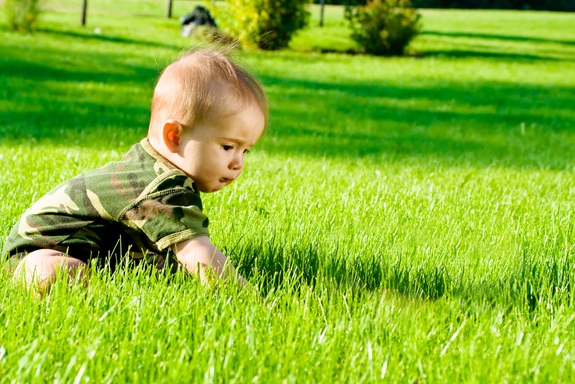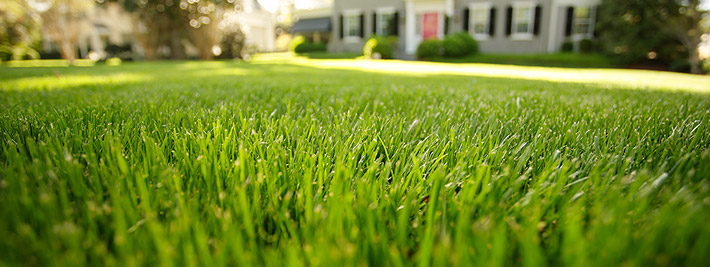This is the time of the year when we start getting a lot of calls and emails from customers worried about dry dead spots they are finding in their yards, and they seem to be growing. Typically, this is chinch bug damage, especially if it's between April and October.
The concern is valid because chinch bugs can cause all wreak havok in Gainesville, Florida lawns.
It is important to know that chinch bugs do not die in winter. Which means In our area many think they are chinch bug-free once they go dormant in winter, but then are surprised when they have a mass invasion again the following spring if not treated properly with a Gainesville Lawn Insect Control.
Another problem is that Chinch bugs are attracted to drought stressed grass. What does that mean? It means when we have a dry spring (like this one), chinch bugs are much more prolific and can do more damage quickly.
Now is the time to treat for chinch bugs. If you want to do-it-yourself, look for a product in the local garden section using Imidacloprid. I know that’s a tough name to remember (let alone say), but you need to make sure that is one of the active ingredient if you are treating for chinch bugs. Another is bifenthrin. Imidacloprid will give the long-term protection, whereas bifenthrin will conduct an immediate kill if you have an active infestation. Don’t make the mistake of picking up the first bag of Ortho or Bayer with an easier name that has a picture of a bug. Take the time to read the labels and make sure you get a product that has Bifenthrin or Imidacloprid which will create actually take care of the chinch bug
It is important to remember that Imidacloprid is a great preventative against chinch bugs, which means it is NOT effective once they are actively feeding. You need to treat before they become active. Also, if the infestation is bad enough, you will need to apply 3-5 times over a span of 6 weeks. This will assure you kill the entire infestation. Otherwise, the eggs will live through the insecticide application (it will wash off before they hatch) and then you will have a second wave infestation.
People often ask me why they should hire a Gainesville Lawn Treatment Company when they can just run to Lowe's and take care of it themselves? I appreciate the question, and it's very easy to answer - it's about time and expertise. Many times DIY-ers will mistake fungus for chinch bugs, or vice versa because they dont have the expertise that our technicians have who have been treating lawns for over 25 years. Mistreating a lawn one time can cause thousands of dollars in sod replacement costs.
The other point I would make is - what is your time and stress worth? The frustration of analyzing your lawn and running back and forth to the home improvement store trying to treat a dead spot before it grows isn't fun, and it certainly isn't relaxing. Let us handle all of that for you, and let you enjoy your yard on the weekends again - knowing that it's under expert care.
If you have any Gainesville lawn or landscape questions, give us a call at 378-LAWN or email info@themasterslawncare.com.









 Bull Thistle – Cirsium vulgare
Bull Thistle – Cirsium vulgare Quackgrass – Agropyron repens
Quackgrass – Agropyron repens Broadleaf Plantain -Plantago rugelii / Plantago major
Broadleaf Plantain -Plantago rugelii / Plantago major Crabgrass – Digitaria sp.
Crabgrass – Digitaria sp. Dandelion – Taraxacum officnale
Dandelion – Taraxacum officnale Goosegrass – Eleusine indica
Goosegrass – Eleusine indica Nutsedge - Cvperus esculentus (yellow) Cvperus rotundus (purple)
Nutsedge - Cvperus esculentus (yellow) Cvperus rotundus (purple) Pennywort: ( Dollarweed ) - Hydrocotvle sp.
Pennywort: ( Dollarweed ) - Hydrocotvle sp. Spurge - Euphorbia maculate, E. supine
Spurge - Euphorbia maculate, E. supine Matchweed – Phyla nodiflora
Matchweed – Phyla nodiflora










